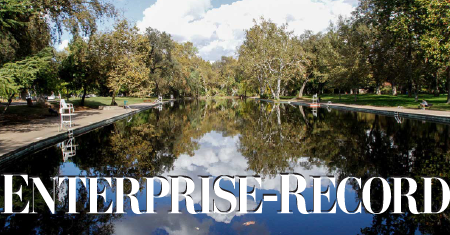
OROVILLE — The California Department of Water Resources could keep the Oroville Dam spillway open through spring as snowmelt and the potential for storms continues.
On March 8, the spillway opened for its second time since it was built in 2018 to allow for some relief from Lake Oroville as storms piled on Northern California causing waves of heavy rain and low snow levels.
Since the opening of the spillway, DWR has released just short of 800,000 acre-feet of water, said DWR State Water Operations Manager Molly White.
“DWR has released a total of 787,417 acre-feet of water for storage management and flood control required by the U.S. Army Corps of Engineers between March 8 and March 29,” White said.
The spillway, as of Thursday, was releasing 12,500 cfs into the Feather River but will be reduced to 10,000 on Friday. White added that the spillway will likely see use until runoff has slowed.
“The spillway will continue to be used at the current releases,” White said. “The spillway may continue to be used throughout the spring snowmelt period to manage water storage levels at Lake Oroville.”
Lake Oroville is sitting at about 857 feet based as of 4 p.m. Thursday with the maximum capacity being 900 feet. This is a significant increase when compared to 2022 when the lake was at 750 feet and even more so against 2021 which saw the lake at 722 feet on March 30.
Water allocations
DWR issued a statement Thursday that said it would be upping water allocations from 35% to 75%.
The massive jump, according to DWR, was thanks to the large Sierra Nevada snowpack and consistent winter storms. According to the statement, this equals an additional 1.7 million acre-feet to the water allocation.
“Consistent storms in late February and March have built up the Sierra snowpack to more than double the amount that California typically sees this time of year,” the statement reads. “Rainfall has also allowed for robust flows through the system, providing adequate water supply for the environment and endangered fish species while allowing the SWP to pump the maximum amount of water allowed under state and federal permits into reservoir storage south of the Sacramento-San Joaquin Delta.”
DWR Director Karla Nemeth said the department’s goal now is to store water for the possibility of drought-creating weather down the line, which California is known for and has been dealing with in recent years.
“California continues to experience weather whiplash, going from extreme drought to a series of atmospheric rivers since late December. It really demonstrates that in times of plenty, we need to move as much water into storage as is feasible,” Nemeth said. “We’ve been able to manage the system to the benefit of communities, agriculture and the environment. It’s certainly been a welcome improvement following the three driest years on record for California.”
Snowpack update
DWR staff is set to conduct yet another snowpack survey at Philips Station at 11 a.m. Monday to determine the density of the pack and its snow-water equivalent.
The department’s water supply forecasting unit manager, Sean de Guzman, will announce the measurements.
A live stream of the event will take place on DWR’s YouTube and Facebook pages.
DWR conducts these surveys early each month from January through April and sometimes later depending on the strength or weakness of the snowpack.



